Surviving a global calamity is, thankfully, a hypothetical usually posed only by summer blockbusters and InfoWars. But dammit, let’s talk hypotheticals.
Pop culture disasters are usually set against backdrops of home-made bomb shelters or a looted gas station — and deep down, we know that these event horizons are just delicious and scary candy for our brains. But at the same time, humanity has also proven itself capable of carrying out large-scale building projects based on doomsday scenarios, both real or imagined.
Whether spurred by the Cold War, climate change, or just the seemingly inevitable arrival of an asteroid strike, humans have gone to extraordinary trouble to plan — and build — for the worst. These buildings range from the underground bunker where FEMA will broadcast emergency radio alerts to the arctic vault where the Norwegian government is amassing a collection of seeds to preserve the world’s biodiversity.
Each is unique for the sheer engineering and design knowledge of its creators.
The Underground Village Built on Springs
Most modern doomsday structures can be traced back to the Cold War. It was a time when the US government had the means — and the political capital — to undertake extremely expensive and sprawling projects to ensure what’s often called “continuity of government,” or the ability of the US government to continue operating under nuclear apocalypse.
From a network of airborne command centres to dozens of relocation centres across the Eastern Seaboard that could house thousands of evacuated government employees, it was a nation-wide network, and it spanned all the way to Colorado, where one of the more incredible engineering projects was dug out of solid rock outside of Colorado Springs in the 1950s: Cheyenne Mountain.

AP Photo
Cheyenne Mountain’s importance on the national stage dwindled decades ago, alongside our fears about total nuclear annihilation by the Soviets. But it’s still a pretty incredible example of bunker design. Originally built to protect NORAD, Cheyenne Mountain transfixed Americans of the 1960s with rumours of its “underground city,” which was commonly describes as having all the trappings of an actual town, from a barbershop to a hospital.
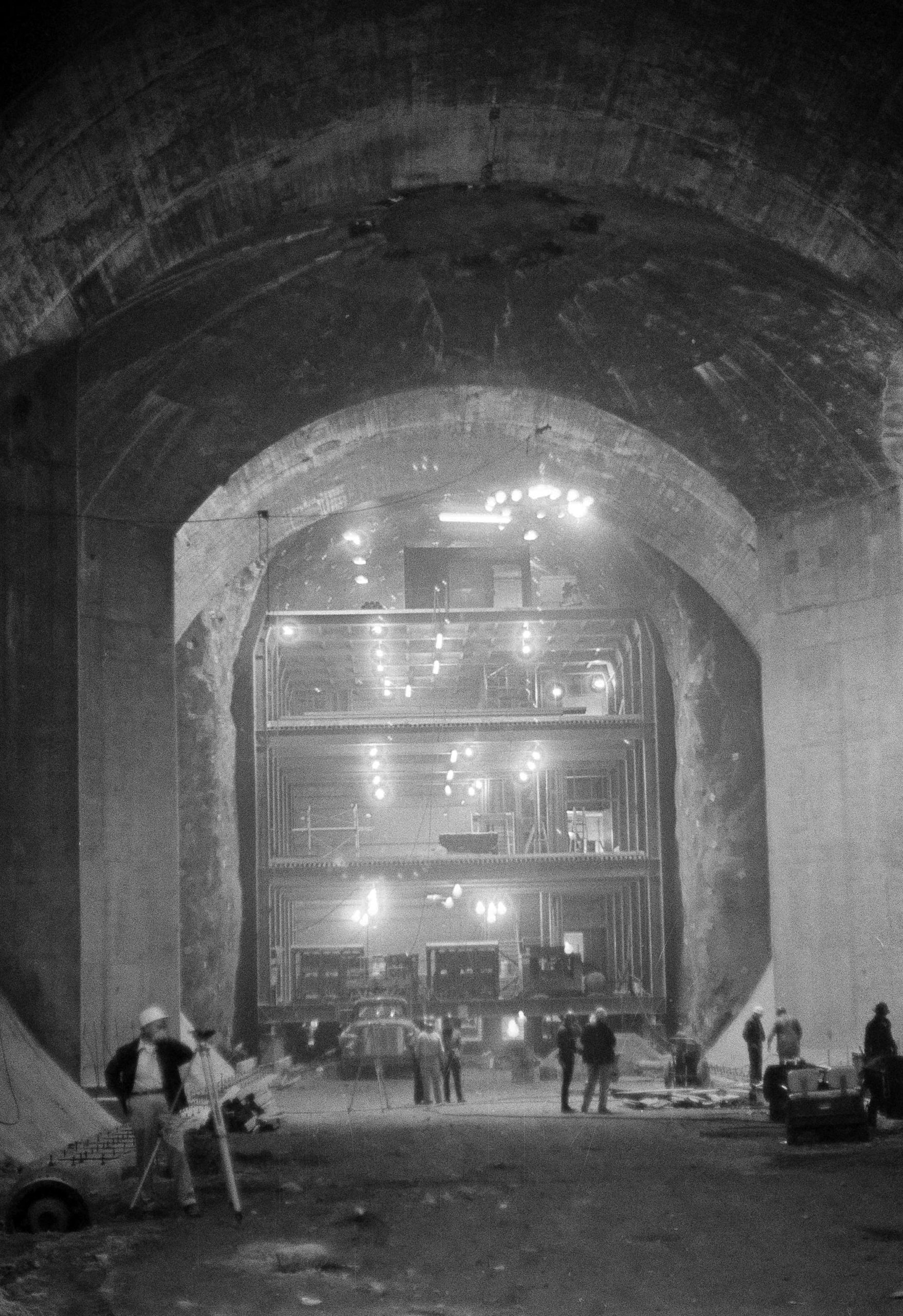
Cheyenne Mountain in 1964. AP Photo/EG.
But it was the way this “village” was built that’s really interesting. Inside, many of the buildings were built on more than 1,3000 metal springs up to four feet long and almost two feet in diameter. These springs, according to the Brookings Institute, were “designed to cushion the shock of nearby detonations.” They’re like huge shocks for the entire complex — if rattled, the equipment and personnel inside would theoretically remain safe.
“Inside 4 1/2 acres of the mountain, some 115,000 bolts shore up the wall (two noncommissioned officers continually check and tighten these bolts to keep the walls from weakening and collapsing).”
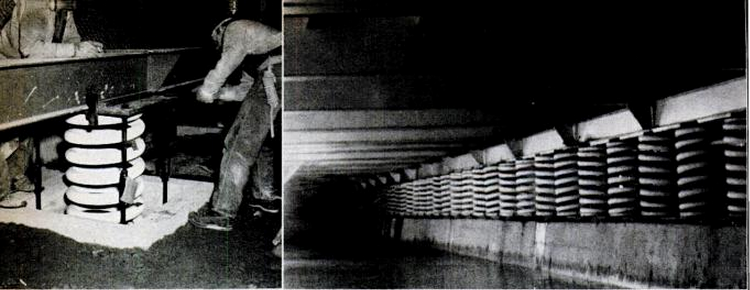
A 1965 issue of Popular Science about the bunker’s construction elaborated on the steel web encasing the small city inside Cheyenne:
Each building is sheathed in a might cucoon of steel plate that is sealed tight. The tiniest pinhole is welded shut. That’s to rpotect the electronic equipment from the “electromagnetic pulse…” Two great steel doors, standing in tandem 50 feet apart and weighing 43 tons each, bar the way to the village proper… These are the village “blast doors,” designed to withstand all but a direct hit by a nuclear bomb. So securely sealed will they be when complete that a person caught between them could, in time, die for lack of air.
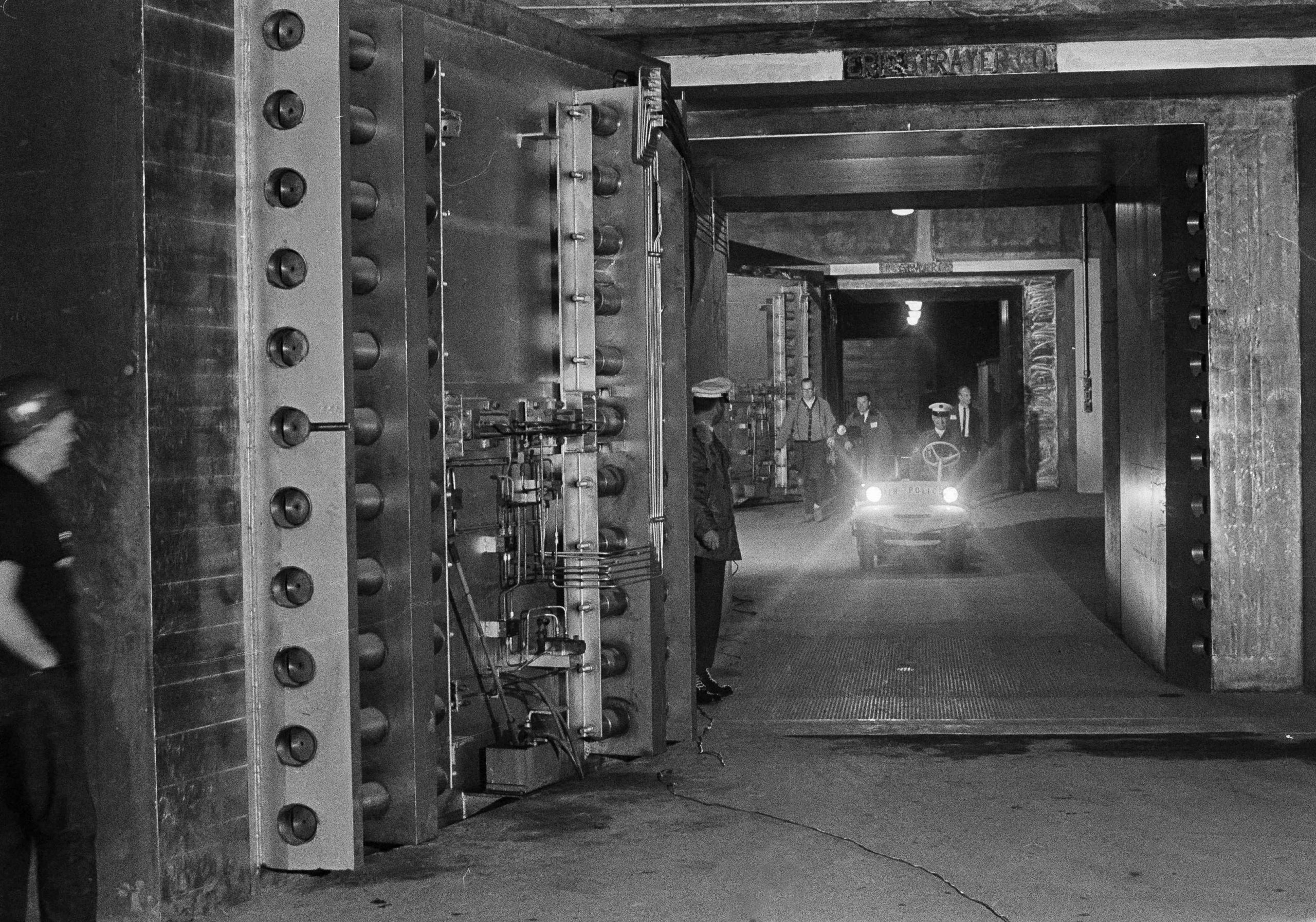
AP Photo
Cheyenne hasn’t been important for decades, but it’s reemerging as a useful command center for the government. Just this year, the US military began storing important important digital equipment at Cheyenne once again. Why now? To shield its communication systems against the threat of solar storm?). Rather than all-out war with the Soviets.
An Emergency Broadcast Center Hidden Inside a Mountain
When we think of survival, our first thoughts are about our immediate need for shelter. But in the longer term, information — the ability to receive signals about what’s happening and where — is just as crucial. That’s why Mount Weather is so important.
Sixty miles outside of DC, on a remote hillside in the Blue Ridge mountains, sits a federally-run complex that has been the focus of a huge amount of speculation over the past 15 years. This complex — officially known as the Mount Weather Emergency Operations Centre — is a a deep warren of tunnels and bunkers built into a hillside and the headquarters for FEMA.
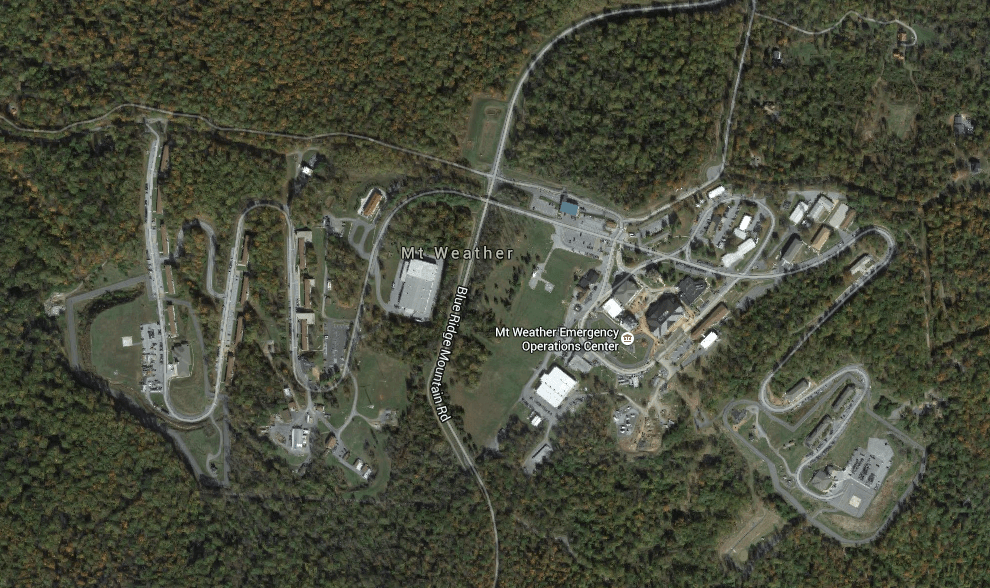
Mount Weather has been around since the 1960s, but there’s been a renewed interest in its role in the federal government. In the years following 9/11, rumours circulated that the Bush administration was using it to set up a “shadow government” ready to operate in the case of an attack on DC. In The Guardian, Tom Vanderbilt described a local woman who called 911 that day after she says she saw “the whole mountain opened up and Air Force One flew in and it closed right up.”
However Dubya planned to use Mount Weather, we do know more about the certain role it would play in the event of a national catastrophe. While the bunker is one of dozens of “relocation sites” for a select list of a few thousand government employees, it would also play a very important role for the average person whose name does not appear on that list — because it’s home to the control center for FEMA’s National Radio System.
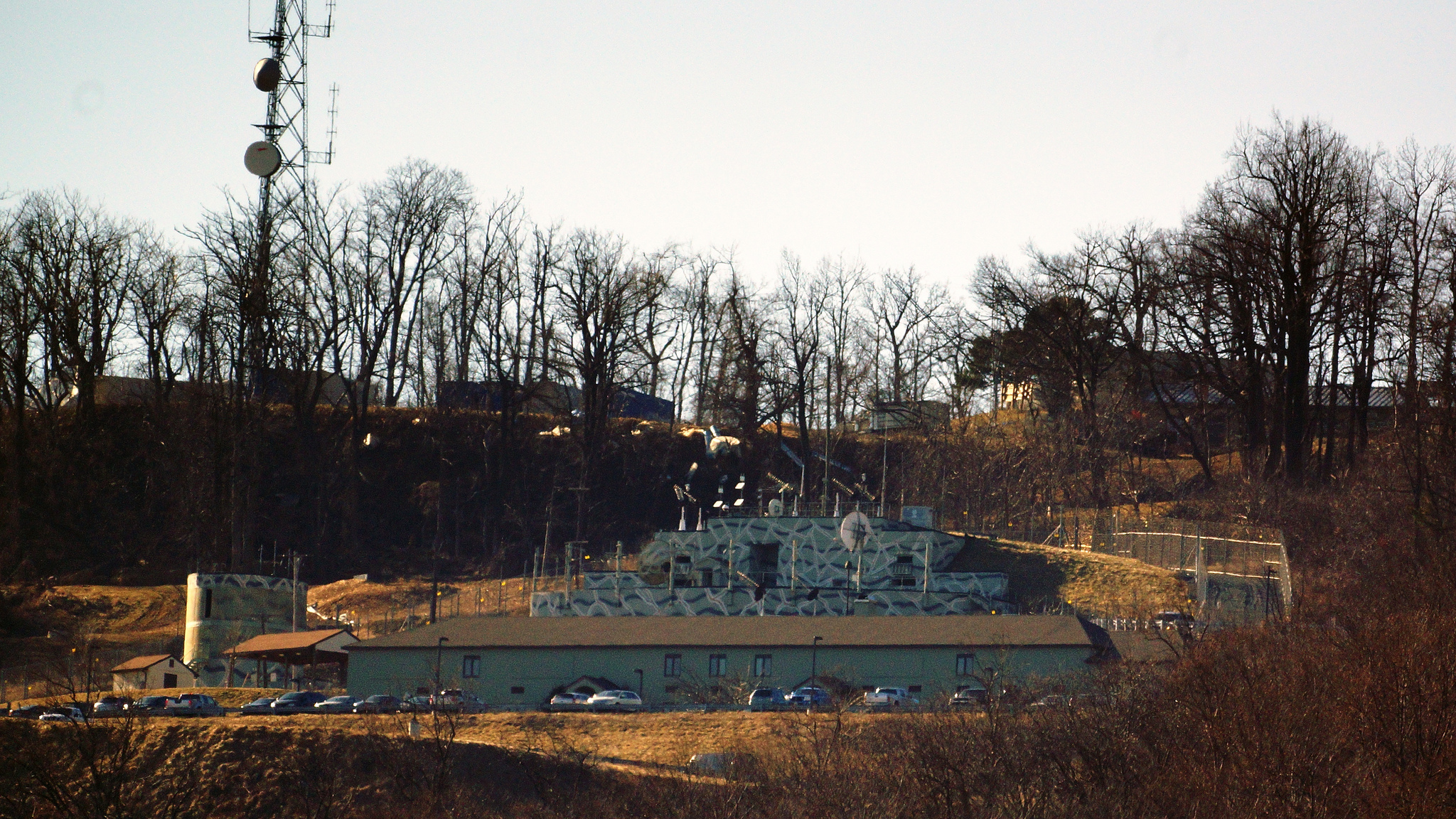
Stephen Little/CC on Flickr
From within Mount Weather, FEMA controls the emergency broadcast system that’s been in place, in one way or another, for decades. In fact, its role as our national siren-sounder led to one of the first instances in which its existence was noted by the public, as the book Secret Places, Hidden Sanctuaries explains:
The area was almost completely unknown to the American public until it received some unwelcome publicity in December 1974, when TWA Flight 514 crashed into Mount Weather. The crash cut the underground line leading to the Emergency Broadcast System, so the teletype machines in media centres around America temporarily transmitted gibberish.
Those spooky, super-loud test signals you hear on radio sometimes? That’s coming from Mount Weather. The New York Times says the system has never been activated by a president on the national level, but that it’s been activated locally as many as 20,000 over the years because of weather events and other region-specific emergencies.
Some argue that the system is woefully outdated in an era of digital communication, but on the other hand, its low-tech profile could actually be a pro in a situation where digital networks are down. Your smartphone may not function for long during an emergency where electricity is a no-go, but a hand-cranked radio could pick up signals from Mount Weather indefinitely, helping survivors reach designated areas and keeping them informed.
An Arctic Bunker With Backup Copies of the World’s Crops
Another long-term necessity for survival? The ability to grow crops, which of course requires seeds. If some or all of the world’s biodiversity has been wiped out, there’s now a backup of sorts sitting deep below permafrost and rock above the Arctic Circle on the remote island of Svalbard.
There, the Norwegian government maintains something called the Global Seed Vault. The Global Crop Trust calls it “the ultimate insurance plan” against extreme weather, overpopulation, and climate change — its remote location of the vault was chosen because of the vulnerability of other seed storage hubs.
On the surface of the mountainside where it’s located, an installation by the Norwegian artist Dyveke Sanne that acts as a kind a lighthouse. It’s designed to make the entrance of the vault visible from anyone nearby, a tough task, considering that its ark-like concrete entrance is easily hidden in the natural camouflage of snow and tundra — thanks to shards of mirror create a beacon of blue-green light.

The vault is theoretically resistant to nearly every imaginable threat: No electricity? It stays relatively cool naturally (though it’s kept at a precise -0.4 degrees Fahrenheit using a/c). Rising sea levels? It’s more than 400 feet above sea level. Bomb blast or asteroid strike? The vault’s three storage rooms are protected by the mountainside, where they are nestled more than 400 feet from the surface. It’s a natural fortress, and inside, the government is assembling millions of varieties of seeds in a space that could eventually hold 4.5 million seeds. Right now, it’s creeping up on the one million mark.
If a particular region of the world undergoes some form of catastrophe — be it a virus or a typhoon or a war — the vault is there to provide the seeds to regrow the species of crops that naturally existed in that region. In theory, it could also provide the building blocks for the new world. The architect behind the structure, Peter W. Söderman, designed it for what the vault’s administrators describe as a “virtually infinite lifetime.”
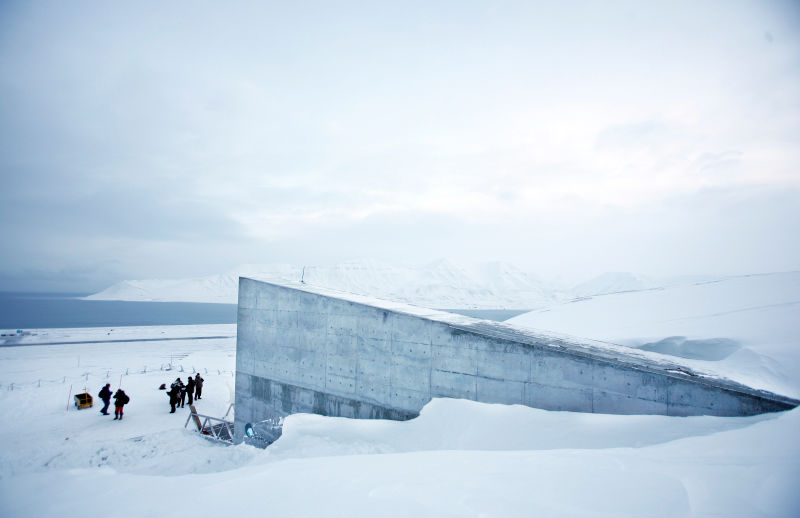
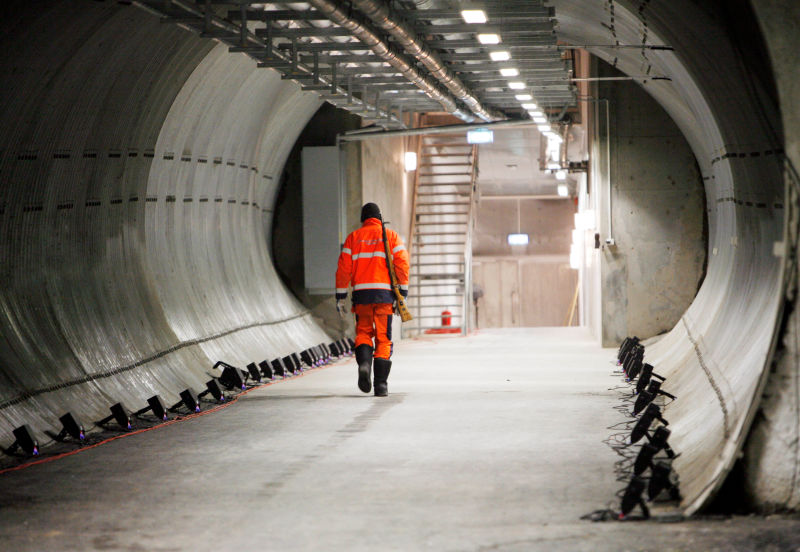
AP Photo/Global Crop Diversity Trust, Mari Tefre
Still, the vault isn’t without critics. A recent story in The Guardian questioned Norway’s approach to genetic diversity, saying that a single insurance policy isn’t the right way to protect the world’s crops:
There is now a growing body of opinion that the world’s faith, in Svalbard and the Crop Trust’s broader mission to create seed banks, is misplaced. Those who have worked with farmers in the field, especially in developing countries, which contain by far the greatest variety of plants, say that diversity cannot be boxed up and saved in a single container — no matter how secure it may be.
A Vault That Could Keep Humanity’s Knowledge For Survivors
But what about survival in an even longer-term sense? What about the centuries of learning and science that could be lost if a global event took place — is there a way to safeguard that?
This isn’t just a question asked by paranoid preppers. Many historians and scientists have pointed out the need to preserve human knowledge in a more permanent form. When you’re trying to protect huge amounts of data, picking a digital medium (CDs? Mac Minis?) is a risky and fraught task — within a decade, odds are good that most digital storage mediums used today will be outmoded and nearly useless, to say nothing of within the next century.
In the mid-2000s, a project called Planets organised by 16 different European universities and libraries set out to create a capsule containing the tools future humans might need to decode outmoded file formats. The group called the digital storage dilemma “a central irony of our age — the rapid advance of information technology puts our information at risk.”
After four years of work, in 2010, Planets completed their task: Creating a capsule that could explain virtually any file format, from USB to microfiche, to future humans. This capsule is currently entombed in a secret bunker in Switzerland called Swiss Fort Knox — a privately-run bunker beneath a mountain in the Swiss Alps that’s home to a number of secure data servers and other digital storage systems.
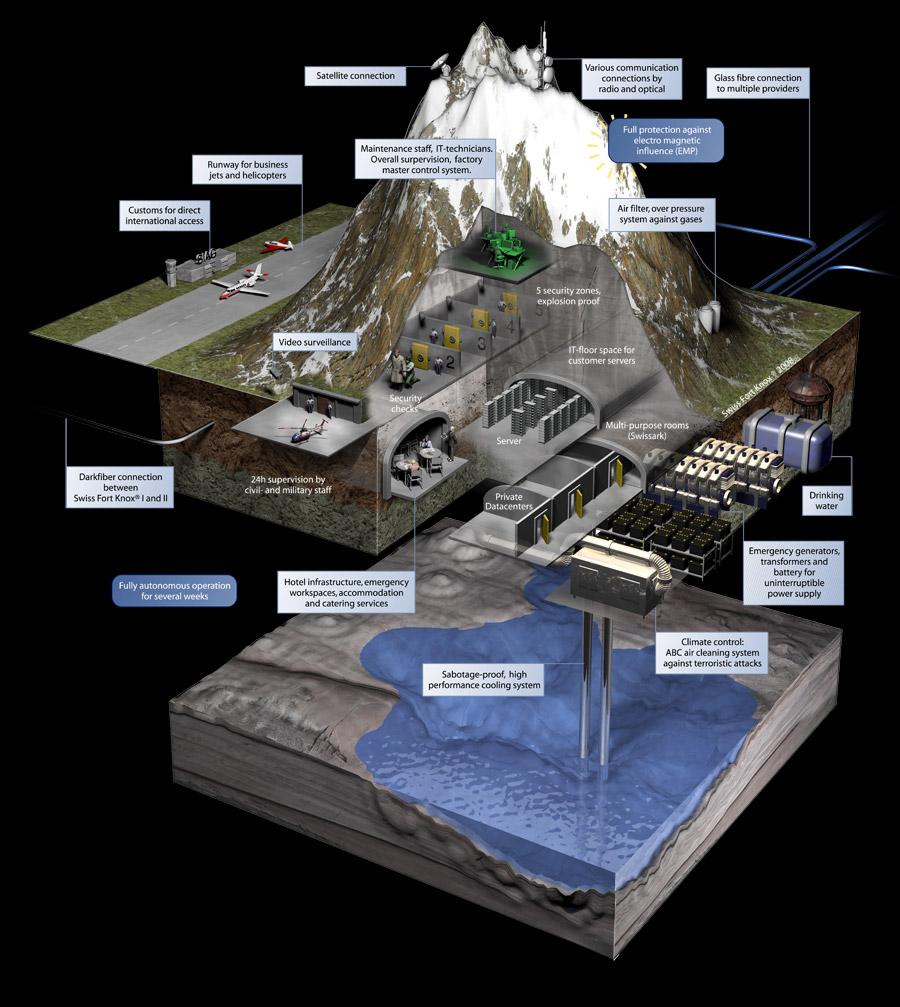
Planets preserved the ability to unlock our current file formats, which within decades will seem as archaic as a lost language. But other researchers are thinking even further into the future — to a time when humans may need to rediscover the whole of human knowledge as we know it today.
A few years ago, the journalist Ed Yong reported on two scientists, Ewan Birney and Nick Goldman, developing a cheap, fast process for encoding and decoding information in pieces of DNA — which can last for millennia and can store immense amounts of data in a single fragment (“all of the world’s data would fit in the back of a minivan,” he writes).
Yong says Birney and Goldman are even thinking about how to build a storage vault that would “teach” future visitors, human or otherwise, to decode this DNA library using descriptive hieroglyphic-style markings inside a super-secure vault:
Goldman and Birney’s hypothetical vault would have three rooms. First up: an introductory chamber, with explanatory illustrations etched on a durable metal like nickel or gold. We cannot assume that any modern languages or visual conventions will survive, but thankfully, the chemistry of DNA will remain unchanged. We could draw out the entire double helix, atom by atom, using concentric circles to represent the individual elements…
Eventually they gain access to the mother lode — the chamber that stores the complete knowledge from humanity’s first age, waiting to be decoded.
That was back in 2013.
Since then, progress on DNA storage has continued steadily. This spring, a group of scientists at Zurich’s Swiss Federal Institute of Technology published a paper in the German journal Angewandte Chemie reporting the results of a series of storage experiments that encoded text on DNA and then protected it using a chemical process similar to fossilisation. Their conclusion? If stored at low temperatures, you could preserve data on DNA for two million years.
There’s been a slow but steady shift in terms of how we think about survival, then. While during the 1950s and 60s the US government poured resources into building airtight bunkers and command centres, “survival” for some today means leaving behind a preserved piece of knowledge — if we can’t survive, then our data might.
